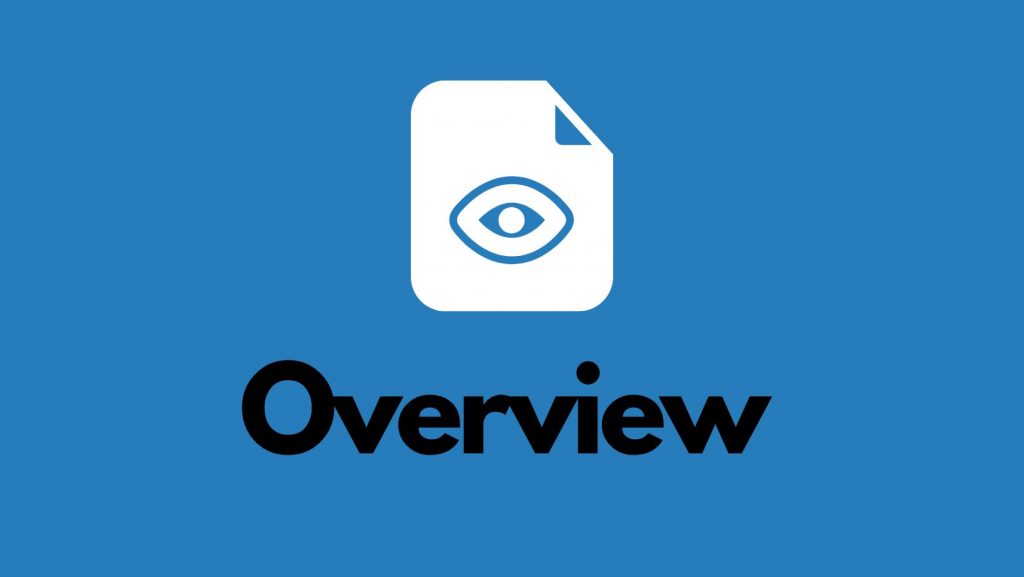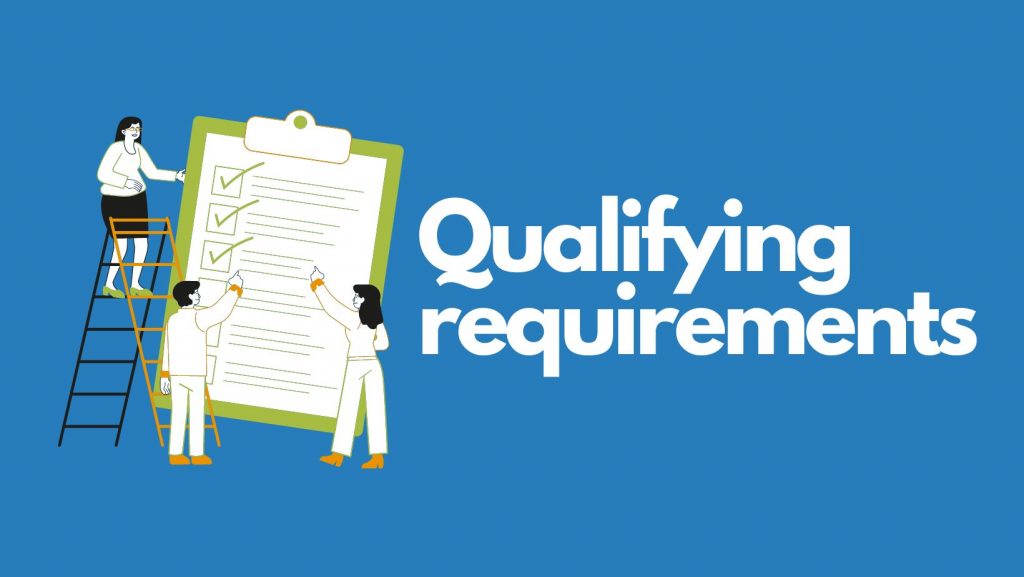
One of the biggest financial decisions you’ll make in your lifetime is buying a home. Whether you’re a first-time homebuyer or an experienced investor, knowing all of your mortgage options is critical to making an informed decision.
With mortgage interest rates still low and mortgage programs continuing to evolve, homebuyers have more options than ever before. One type of mortgage that homebuyers are starting to see more of is zero down payment loans. These loans allow you to purchase a home with a down payment of 0% – meaning you won’t need any money upfront to close on the loan.
And just like any other loan, there are pros and cons associated with zero down payment mortgages that homebuyers should be aware of when deciding between this type of mortgage and low-down payment loans.

Overview of zero and low-down payment mortgages
A no-down-payment mortgage is a type of mortgage loan for home purchase that requires no down payment to obtain funding. This type of mortgage loan is typically available to first-time homebuyers and homebuyers who do not have substantial credit history or income.
No-down-payment mortgages have several advantages over conventional loans. One of the advantages is that borrowers do not require a large amount of down payment. Another advantage of no-down-payment mortgage is that interest rate is low, which saves interest costs. Additionally, no-down-payment mortgage loans are easier to obtain because they do not require credit score minimums like conventional loans. Besides, these loans can help homebuyers save money in interest costs and closing costs as they do not need to factor in down payment or mortgage insurance premiums as part of their monthly loan payments.
However, there are downsides of no-down-payment mortgage loans as well. The borrower may find it difficult to meet minimum monthly loan payments and pay the closing costs if he/she does not have sufficient income or credit score requirement. A downside of this type of loan is that interest rates can increase over time, which increases the borrower’s monthly payment amount.
Another disadvantage of zero down mortgage loans is the higher interest rate charged on home equity loans. This means that borrowers will have to pay more interest when taking on home equity loans as compared to conventional loans with a down payment requirement of 3% or higher.
Overall, no-down-payment mortgage loans are an excellent option for those looking to purchase their first home without having large down payments or credit score requirements.
Advantages and disadvantages of a zero down payment mortgage
A zero-down mortgage is a loan option for homebuyers who don’t have a large down payment. A borrower with a zero-down mortgage makes monthly mortgage payments equal to the interest rate, loan amount, and loan term without having to put any money down at closing.
Borrowers using this mortgage option can often purchase a home with less of a financial burden. Zero-down mortgages are popular among first-time homebuyers because they allow them to purchase a home without the large down payment typically required.
However, zero-down loans do come with some advantages and disadvantages. Advantages of zero-down mortgages include access to low-interest housing loans for those who might not qualify for other financing options. They also provide borrowers with more flexibility and choice in loan terms, interest rates, and loan terms. However, there are long-term advantages of putting down as much money as possible at closing.
A borrower on a zero-down mortgage may be more likely to experience loan default, which can result in higher interest rates and monthly mortgage payments. A conventional down payment of 5% of the sale price is still recommended for most home purchases, whether it be with a conventional loan or a zero-down mortgage loan.
Advantages and disadvantages of a low-down payment mortgage
A low down payment mortgage is a loan type that allows homebuyers to make a smaller down payment and receive financing for the rest of the price of the home. Low-down payment mortgages offer several benefits, such as helping homebuyers become homeowners and build equity faster than waiting to save a large down payment.
In addition to the interest savings from making smaller down payments, low-down payment mortgages have other advantages, such as reducing the risk of mortgage default and providing mortgage insurance coverage in case of loan default. It’s important to consider the costs associated with low-down payment mortgages when deciding whether they are right for you.
With low-down payment mortgages, homebuyers can face higher interest rates and monthly payments than with conventional loans. They also may end up owing more than the home is worth if the housing market experiences a downward trend. So it’s important to choose a mortgage type that offers benefits and costs that are right for your budget and goals.
What are the qualifying requirements for each type?

A mortgage with a down payment is typically required for a conventional mortgage. A minimum down payment of 5% of the mortgage loan amount is common for conventional mortgages.
Conventional 97% loan-to-value ratio mortgages require credit scores of 620+ and debt lower than 41% of income. HomeReady mortgages from Fannie Mae require a 3% down payment and a credit score of 620+.
For home loans with a down payment, government home loans such as FHA loans and home loan options from lenders such as Bank of America also have minimum down payment requirements. These loans typically require mortgage insurance throughout the loan term unless refinanced to a conventional loan.
How do lenders evaluate credit risk for these types of mortgages?
When evaluating credit risk for a low- or zero-down mortgage, lenders assess creditworthiness through a preapproval process. This includes reviewing income, credit score, debt-to-income ratio, and other factors to determine what loan amount is appropriate for the borrower. The lender will also look at the borrower’s ability to repay the loan and the loan-to-value ratio of the property.
In some cases, lenders may offer incentives such as lower interest rates or discounted processing fees to reduce the risk of a loan. Depending on specific mortgage terms, low down payment mortgages may require mortgage insurance or a minimum credit score requirement. However, lenders consider many factors when determining loan eligibility and loan amount.
Credit score requirements for zero and low-down payment mortgages
Lenders will evaluate credit risk of zero and low-down payment mortgage loans based on a borrower’s credit score. Depending on the type of mortgage loan, lenders may specify a minimum credit score that must be met in order to qualify for the loan. For example, conventional loans require a minimum credit score of 620 for a low down payment.
On the other hand, VA loans typically require a minimum credit score of at least 620, while FHA loans generally require a minimum credit score of 500 if the borrower is willing to invest 10% or more in upfront costs. Additionally, certain mortgage insurance companies may have their own requirements for loan approval that differ from those of conventional lenders.
Down payment requirements for zero and low-down payment mortgages

A zero-down mortgage allows homebuyers to purchase a house without any money down, with the exception of standard closing costs. This type of mortgage is typically only available for higher-priced homes. To apply for a zero-down mortgage, homebuyers must have a stable income and credit history and be able rate of at least 20%.
In addition, mortgage lenders typically require homebuyers to have a minimum down payment of 5%. Other requirements for conventional mortgages include a Certificate of Eligibility from the VA, a credit score of 580-620, and a debt-to-income ratio below 41%. For loans from the FHA program and conventional 97 loan, down payments can be as low as 3% or even less. Government grants and loans may help cover out-of-pocket costs.
Documentation requirements for these types of mortgages

A down payment of at least 5% of a home’s sale price is traditionally required to secure a mortgage. Other requirements may also be in place, such as a credit score of 580-620 and a debt-to-income ratio below 41%. These requirements ensure that homeownership is financially achievable for those who have a low credit score or are unable to afford the entire purchase price upfront.
In addition, home loans with low down payment options may require additional documentation, such as proof of employment, income, and financial standing. Such requirements help lenders evaluate the borrower’s ability to repay the loan and minimize risks associated with homeownership.
VA loans are a common type of low down payment mortgage that can be beneficial for homeowners seeking an affordable mortgage rate and minimal upfront costs. These loans offer no maximum loan amount and require 0% down payment, making them ideal for first-time homebuyers with less than perfect credit scores. However, other types of mortgages may have different requirements and eligibility criteria, so homeowners should review the details of their loan options carefully before committing to any one financing option.
Private mortgage insurance (PMI) considerations for zero and low-down payment mortgages
Zero-down mortgage and low-down payment mortgages allow homebuyers to purchase a house without spending any of their own money down. However, homebuyers with a small down payment may require private mortgage insurance (PMI) to protect lenders from the risk associated with these loans. PMI covers loan payments in the event of loan default, and is typically required for loans with down payments of less than 20%.
Some mortgage lenders may require homebuyers with low-down payment mortgages to purchase PMI coverage as part of their mortgage loan agreement. This coverage can protect lenders from potential losses if a borrower defaults on their loan.
What other factors should I consider when deciding between a zero or low-down payment mortgage?
When deciding between a zero or low-down payment mortgage, consider the long-term advantages of putting down as much as you can. A down payment helps offset the cost of homebuyer loan interest, closing costs, and home insurance. This makes financing your home purchase more affordable and sustainable over time.
There are various loan types available, such as FHA and Conventional 97 which allow as little as 3% down. Also government grants and loans may be available to cover out-of-pocket costs. Down payment percentage is usually calculated as a percentage of the total amount borrowed, so it’s important to consider the benefits of having an upfront investment in the home when defaulting on a loan.
Interest rates and terms of the loan
A down payment of 5% or more is traditionally required for homebuyer loans. However, Zero-Down payment mortgage options are available. These options can help buyers show financial readiness and protect them in case of a downturn in the housing market.
Another factor to consider when deciding between a zero and low-down payment mortgage is interest rates and terms of the loan. Interest rates may vary depending on the credit rating of the borrower, loan amount, and other factors. Additionally, mortgage loan terms can be extended or reduced based on borrower income and credit score. For example, a mortgage with a 10% interest rate could be reduced to 8% if the borrower has an excellent credit score.
Your credit score and financial health
When searching for low-down payment mortgage options, credit score is an important factor to consider. This score plays a crucial role in qualifying for low-down payment mortgages and credit. For conventional loans, a score of 620 or higher is generally required. Additionally, FHA loans require at least a 580 score to qualify for a 3.5% down payment, while a score between 500 and 579 requires a 10% down payment.
In addition to credit score, other factors to consider when searching for low-down payment mortgage options include loan type and interest rate. Some mortgage options require higher credit scores than others, so it’s important to do your research and find the best one for you.
When searching for low-down payment mortgage options, credit score is an important factor to consider. This score plays a crucial role in qualifying for low-down payment mortgages and credit. For conventional loans, a score of 620 or higher is generally required. Additionally, FHA loans require at least a 580 score to qualify for a 3.5% down payment, while a score between 500 and 579 requires a 10% down payment.
In addition to credit score, other factors to consider when searching for low-down payment mortgage options include loan type and interest rate. Some mortgage options require higher credit scores than others, so it’s important to do your research and find the best one for you.
PMI (Private Mortgage Insurance) costs
When it rate shopping, it’s important to consider the down payment and other loan requirements of conventional and government-backed loans. For conventional loans, a minimum down payment of at-least 3% is required. The down payment requirement for conventional loans ranges from 5-20%, depending on the loan amount.
On the other hand, if you are interested in an FHA loan, a minimum down payment of at least 3.5% is required. Additionally, homebuyers must meet certain credit score requirements to be eligible for an FHA loan. These requirements vary based on loan amount and type, so be sure to check with your lender for details.
When comparing mortgage options, it’s important to factor in costs such as interest rates and monthly payments. Consider how different mortgage options will impact your monthly payment and interest rate, and decide which one best meets your financial needs.
Property taxes, insurance, and other fees

There are a number of factors to consider when deciding between zero and low-down payment mortgage options. First, it is important to remember that the longer the loan term, the higher interest rate you will pay over the life of the loan. So if possible, choose a mortgage with a shorter loan term (i.e., 15- or 30-year loan) to save on interest costs.
Another factor to consider is property taxes and insurance fees associated with your housing purchase. These costs can quickly add up, so be sure to take them into account when deciding between zero and low-down payment mortgage options.
Additionally, consider how much equity you would have in your home if you paid off your mortgage earlier than planned. This can help you determine whether paying down the loan faster may make financial sense for you.
Long-term affordability of the mortgage
A traditional mortgage typically requires a down payment of at least 5% of the home’s purchase price. Long-term affordability of the mortgage can be affected if there is no down payment. A zero-down mortgage allows for small down payments and thus helps first-time homebuyers to get into a home without a large down payment.
However, the long-term affordability of such mortgage products must be weighed against their short-term benefits. For example, zero-down mortgage loans may have higher interest rates and fees than conventional mortgages with a down payment requirement. In addition, zero-down mortgage loans typically have loan terms that are longer than conventional mortgages, potentially resulting in higher monthly payments over time.
Besides, first-time homebuyers typically have minimum down payments of 6% to 7% of the home’s purchase price.
Where can I find more information on these types of mortgages?
- A mortgage loan is a loan that consumers take out to purchase a home. A variety of loan types are available for homebuyers, the most common being a traditional mortgage requiring a 5% down payment. This type of loan is secured by the home’s value, and interest rate fluctuations are largely dependent on the borrower’s creditworthiness.
- A credit union mortgage can offer zero-down mortgages with membership. When compared to conventional mortgages, these loans typically have lower interest rates and fees. However, borrowers must meet specific requirements regarding income and credit history.
- Preapproval can be a helpful tool when making an offer on a home. This type of loan allows buyers to receive financing before closing without providing any financial information or committing to a loan amount or interest rate. As a result, it can help them negotiate terms more favorable to their needs and budget.
- Mortgage origination fees tend to be high, but there are options out there for homeowners who want low interest rates and lower monthly payments. Still, it’s important for homebuyers to do their research and consider which loan option is best for their unique situation.
Shopping and comparing lenders
Lenders offer various mortgage options that can help homeowners finance their home purchase, from conventional loans to low down payment mortgages. Zero down payment mortgage options allow homeowners to purchase a home with only a small down payment.
To qualify for such a mortgage, you may require a minimum credit score of 620 and good credit history. If you are planning to purchase a home with less than a $100 down payment, consider exploring the options offered by HUD’s Good Neighbor Next Door (GNND) program. This program offers up to 50% of the home price off for homeowners who have only a down payment of $100 or less.
The federal government is funding this program through a $1 billion loan program called FHA Streamlined Closed-End Mortgage program. Other eligibility requirements include having a first mortgage and qualifying for the discount portion of the home in the form of another loan.
Comparing interest rates and fees
Buyers can put down an average of 7% of the purchase price for a first-time home purchase, which means that they will need to find an lender willing to loan them up to 78% of the purchase price. As per data from the National Association of Realtors, homebuyers typically require a credit score of at minimum 580 in order to qualify for financing with a down payment of 3.5% on average.
In addition, interest rates displayed for purchase loans and refinances typically require loan origination fees of 1% or higher, which can increase the interest rate on the loan. For more information on mortgage options and rates for homebuyers, please speak with a mortgage expert.
Researching down payment assistance programs
Down payment assistance programs are available nationwide and can help with financing the down payment for a home purchase. These programs provide funding to cover part of the down payment for homeowners who may not be able to afford the entire down payment on their own. Down payment assistance programs vary by state, city, and county, and many organizations offer grants or loans to help homeowners afford a mortgage. In addition to funding, these programs often have eligibility requirements that homeowners must meet. Some of the common requirements include:
- Having a good credit score
- Having a sufficient income
- Being willing to commit to living in the home for at least 5 years
- Not having any existing mortgage or loan obligations
Down payment assistance programs can be a great way for first-time homebuyers to save for a down payment without compromising their financial stability.
Exploring state and local loan programs
Lending options for homebuyers vary from state to state. Some states and local governments offer down payment assistance programs, such as closing cost assistance and low interest rate home loans. Other programs may be restricted to buyers with particular income levels. In some cases, homebuyers may be required to have a down payment of at least 20%. Today, zero-down loan options are only available to select individuals with good credit scores and the ability to document adequate income. For individuals who meet these criteria, government-backed mortgage programs, such as the USDA loan program and the VA loan program, can be a viable option. Local credit unions may also offer zero-down loans based on eligibility criteria related to membership in a professional organization.
Frequently Asked Questions
What types of added fees might be associated with these mortgages?
When applying for a home mortgage loan, there are several types of added fees to be aware of:
- Lender credit: This fee is sometimes associated with mortgages and can come in the form of a lower interest rate when using preferred services or discounted processing and closing fees.
- Mortgage down payment: Before you can purchase a home, you may need to make a down payment of at least 5% of the home’s sale price. Down payments generally come out of pocket from your personal savings or eligible gifts.
- Closing costs: Homebuyers may also have to pay closing costs when purchasing a home. These costs usually include bank fees, title search fees, taxes and recording fees.
What are the advantages and disadvantages of zero and low-down payment mortgages?
Zero-down payment mortgages and low-down payment mortgages are popular options for first-time homebuyers who cannot afford the typical down payment of 6-7% for conventional loan products. Here are some of the advantages and disadvantages of zero-and low-down payment mortgage options:
Advantages:
- Zero-down payment mortgage products allow first-time homebuyers to purchase a home without needing to make a large upfront payment.
- Low-down payment mortgage products provide buyers with options if they cannot afford the higher down payment requirement of conventional loan products.
Disadvantages:
- Low-down payment mortgage and no down payment mortgage products may have additional expenses such as mortgage insurance, which can increase monthly payments.
- Low-down payment mortgage and no down payment mortgage options may also have higher interest rates or monthly payments compared to conventional loan products.
- Government programs may not be available in all areas that offer assistance for out-of-pocket costs for low down payment mortgages and zero down payment mortgages.
How do these mortgages compare to traditional mortgages in terms of interest rates and other costs?
Low-down-payment and no-down-payment mortgage loans compare with traditional home loans in terms of interest rates and other costs. Traditional mortgages typically require a minimum 5% down payment; conventional loan products often require 3% down or less, and the HomeReady and Home Possible programs offer even easier qualification guidelines, including increased DTI limits and multiple income streams.
However, low-down payment and no-down payment mortgage options may include extra expenses such as mortgage insurance and a VA funding fee, which traditional home loans don't typically require. Additionally, interest rates and monthly mortgage payments may be higher with a low-down-payment mortgage than with a traditional home loan. Lastly, USDA loan programs offer 100 percent financing and no down payment but have limitations on property size and value as well as borrower income.
Conclusion
There are several mortgage options to choose from if you’re a first-time homebuyer or a low-income borrower. They include zero down payment loans, low-down payment loans, and mortgage credit programs. Before applying for a home loan, compare interest rates and fees of various mortgage options from multiple lenders. This will help you make an informed decision that matches your home buying goals and financial situation. You can also explore state and local loan programs that offer assistance for first-time homebuyers.



